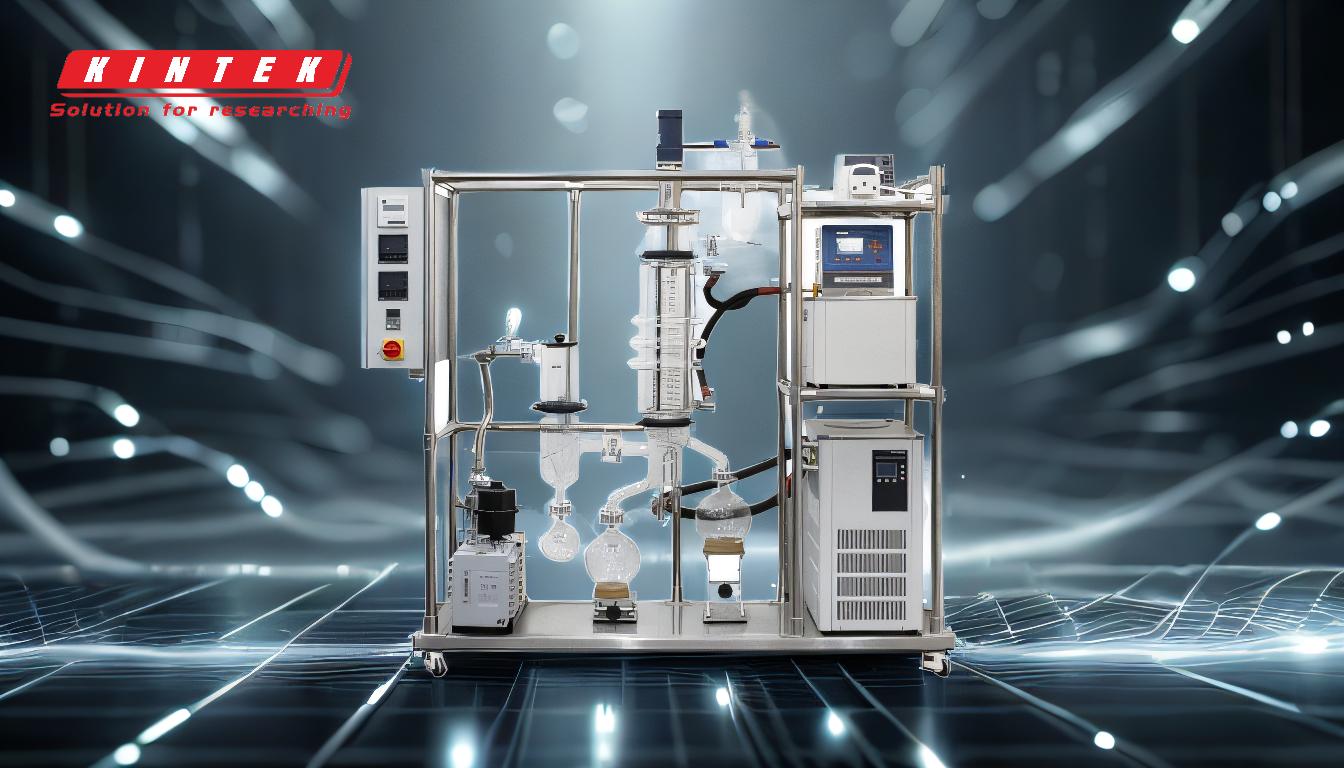Distillation is a widely used separation process that involves heating a liquid mixture to create vapor and then cooling the vapor to obtain a purified liquid. The variations of distillation processes are designed to handle different types of mixtures, operating conditions, and desired outcomes. Key variations include simple distillation, fractional distillation, steam distillation, vacuum distillation, short-path distillation, wiped-film distillation, thin-film distillation, air-sensitive vacuum distillation, and zone distillation. Each method has unique characteristics, applications, and advantages, making them suitable for specific industries and purposes, such as chemical processing, pharmaceuticals, essential oils, and semiconductor manufacturing.
Key Points Explained:

-
Simple Distillation
- Process: Involves heating a liquid mixture to create vapor and then condensing the vapor to separate components based on their boiling points.
- Applications: Ideal for separating liquids with significantly different boiling points, such as water and alcohol.
- Limitations: Not effective for mixtures with close boiling points or complex compositions.
-
Fractional Distillation
- Process: Uses a fractionating column to separate components with closer boiling points by allowing repeated condensation and vaporization cycles.
- Applications: Commonly used in petroleum refining to separate crude oil into fractions like gasoline, diesel, and kerosene.
- Advantages: Provides higher purity and separation efficiency compared to simple distillation.
-
Steam Distillation
- Process: Introduces steam into the mixture to lower the boiling points of heat-sensitive compounds, allowing them to vaporize at lower temperatures.
- Applications: Extensively used in the extraction of essential oils from plants and for purifying heat-sensitive compounds.
- Advantages: Prevents thermal degradation of sensitive materials.
-
Vacuum Distillation
- Process: Operates under reduced pressure to lower the boiling points of components, enabling separation at lower temperatures.
- Applications: Suitable for separating high-boiling-point or thermally unstable compounds, such as in the pharmaceutical and chemical industries.
- Advantages: Reduces energy consumption and minimizes thermal degradation.
-
Short-Path Distillation
- Process: Places the evaporator and condenser close together to minimize pressure drop and enhance separation efficiency.
- Applications: Used for purifying small quantities of high-value compounds, such as cannabinoids in the CBD industry.
- Advantages: High efficiency and suitability for heat-sensitive materials.
-
Wiped-Film Distillation
- Process: Utilizes a rotating wiper blade to spread a thin film of the mixture on the evaporator surface, increasing surface area and separation efficiency.
- Applications: Common in the purification of heat-sensitive materials, such as vitamins, essential oils, and CBD extracts.
- Advantages: High separation efficiency and reduced thermal stress on materials.
-
Thin-Film Distillation
- Process: Spreads the mixture on the evaporator surface using gravity or a rotating wiper blade, operating at low temperatures.
- Applications: Ideal for separating heat-sensitive compounds, such as in the pharmaceutical and food industries.
- Advantages: Minimizes thermal degradation and operates at lower temperatures.
-
Air-Sensitive Vacuum Distillation
- Process: Conducts distillation under vacuum to handle air-sensitive compounds that may degrade or react with oxygen.
- Applications: Used in the synthesis and purification of air-sensitive chemicals, such as organometallic compounds.
- Advantages: Protects sensitive materials from oxidation or degradation.
-
Zone Distillation
- Process: Involves heating a narrow zone of a solid or liquid mixture to create a concentration gradient, allowing separation based on differences in volatility.
- Applications: Primarily used in the purification of metals and semiconductors.
- Advantages: Provides high-purity materials with minimal contamination.
-
Molecular Beam Epitaxy (MBE)
- Process: Uses a beam of high-energy particles to deposit thin films of compounds on a substrate, often under ultra-high vacuum conditions.
- Applications: Widely used in the semiconductor industry for creating high-purity thin films and nanostructures.
- Advantages: Enables precise control over film composition and thickness.
Each distillation method is tailored to specific requirements, such as the nature of the mixture, desired purity, and sensitivity to heat or air. Understanding these variations helps in selecting the most appropriate process for a given application, ensuring optimal efficiency and product quality.
Summary Table:
| Distillation Method | Key Characteristics | Applications | Advantages |
|---|---|---|---|
| Simple Distillation | Separates liquids with significantly different boiling points. | Water and alcohol separation. | Simple and effective for basic separations. |
| Fractional Distillation | Uses a fractionating column for repeated condensation and vaporization cycles. | Petroleum refining (gasoline, diesel, kerosene). | Higher purity and efficiency for complex mixtures. |
| Steam Distillation | Introduces steam to lower boiling points of heat-sensitive compounds. | Essential oil extraction and heat-sensitive compound purification. | Prevents thermal degradation. |
| Vacuum Distillation | Operates under reduced pressure to lower boiling points. | Pharmaceutical and chemical industries for high-boiling-point compounds. | Reduces energy consumption and thermal degradation. |
| Short-Path Distillation | Evaporator and condenser are close together for minimal pressure drop. | Purification of high-value compounds like cannabinoids. | High efficiency for heat-sensitive materials. |
| Wiped-Film Distillation | Uses a rotating wiper blade to spread a thin film for increased surface area. | Purification of vitamins, essential oils, and CBD extracts. | High separation efficiency and reduced thermal stress. |
| Thin-Film Distillation | Spreads mixture on evaporator surface using gravity or a wiper blade at low temps. | Pharmaceutical and food industries for heat-sensitive compounds. | Minimizes thermal degradation and operates at lower temperatures. |
| Air-Sensitive Vacuum Dist. | Conducts distillation under vacuum to handle air-sensitive compounds. | Synthesis and purification of organometallic compounds. | Protects sensitive materials from oxidation or degradation. |
| Zone Distillation | Heats a narrow zone to create a concentration gradient for separation. | Purification of metals and semiconductors. | Provides high-purity materials with minimal contamination. |
| Molecular Beam Epitaxy (MBE) | Uses high-energy particles to deposit thin films under ultra-high vacuum. | Semiconductor industry for high-purity thin films and nanostructures. | Precise control over film composition and thickness. |
Discover the perfect distillation method for your needs—contact our experts today!










